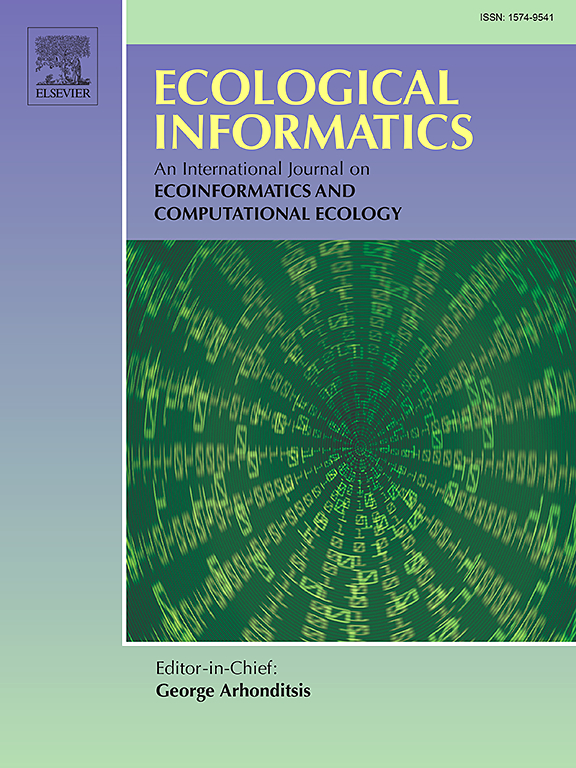A theoretical model of plant species competition: The case of invasive Carpobrotus sp. pl. and native Mediterranean coastal species
IF 5.8
2区 环境科学与生态学
Q1 ECOLOGY
引用次数: 0
Abstract
In this paper we introduce and study a new mathematical model that describes the interaction between invasive and native plants in competition for resources and space. The first are represented by Carpobrotus sp. pl. while the second by the native coastal area species. Following the terminology used in modeling, we have used the term “population” to refer to the set of plants, i.e. native and alien invasive. Differently than in a classical Lotka–Volterra competition model, here we assume that the invasive species grow following a generalized logistic growth law while the native population a logistic one. Moreover, in the competition term we take into account the fact that the two populations of plant interact in a 3D space and the interaction occurs on the borders of the vegetation patch and/or volume, meaning that both densities will be characterized also by two exponents. A complete mathematical analysis of the proposed model was done by studying also some particular cases of it. The model is characterized by the presence of different equilibrium points such as the trivial equilibrium point, where both populations get extinct, the Carpobrotus-free equilibrium, the native-plant-free equilibrium and the coexistence, where both plant populations coexists. Computational simulations show that different bistability scenarios exist but also the tristability of the last three equilibrium introduced above was studied. The obtained results suggest that external factors, due to human intervention, that leads to a decrease in the initial population of Carpobrotus sp. pl. and/or increase of the native population might help in having the stability of the Carpobrotus-free equilibrium or the coexistence equilibrium.
求助全文
约1分钟内获得全文
求助全文
来源期刊

Ecological Informatics
环境科学-生态学
CiteScore
8.30
自引率
11.80%
发文量
346
审稿时长
46 days
期刊介绍:
The journal Ecological Informatics is devoted to the publication of high quality, peer-reviewed articles on all aspects of computational ecology, data science and biogeography. The scope of the journal takes into account the data-intensive nature of ecology, the growing capacity of information technology to access, harness and leverage complex data as well as the critical need for informing sustainable management in view of global environmental and climate change.
The nature of the journal is interdisciplinary at the crossover between ecology and informatics. It focuses on novel concepts and techniques for image- and genome-based monitoring and interpretation, sensor- and multimedia-based data acquisition, internet-based data archiving and sharing, data assimilation, modelling and prediction of ecological data.
 求助内容:
求助内容: 应助结果提醒方式:
应助结果提醒方式:


